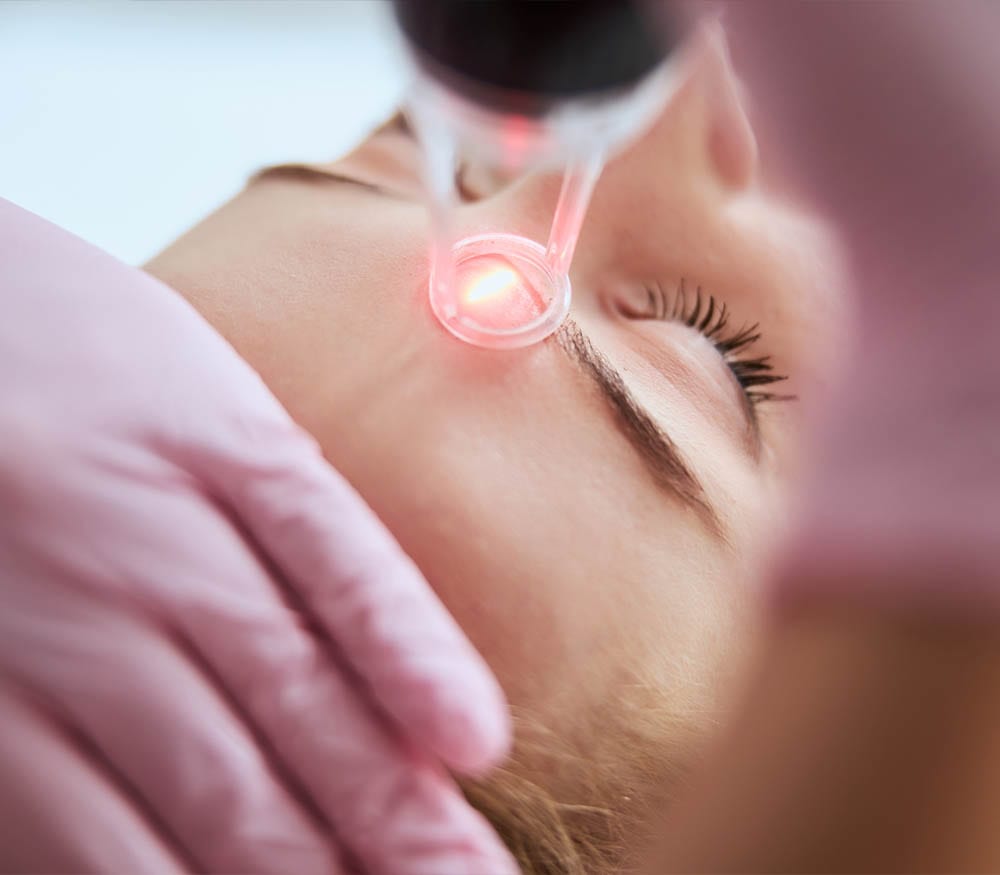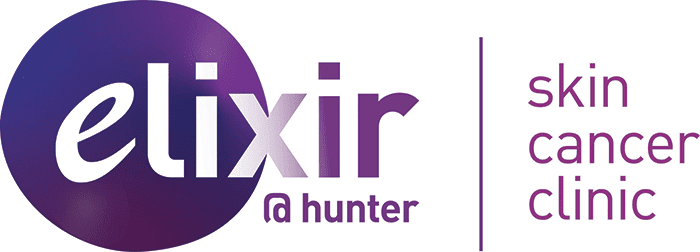
IPL skin rejuvenation
Treatment to reduce facial broken capillaries, sunspots, freckles, veins, and for skin tightening, pore reduction and wrinkle reduction.


IPL Skin Rejuvenation Maitland, Hunter Valley, NSW
What is IPL?
Intense Pulsed Light (IPL) therapy, involves a series of intense flashes of light lasting only a few milliseconds. These flashes are of specific wavelengths designed to produce remarkable effects in:
- Clearing freckles
- Reducing pigmentation
- Reducing rosacea redness
- Improving broken capillaries
- Stimulating new collagen formation
Pigmentation improvement with IPL
Pigmentation is a very common problem and it can be improved with IPL treatment.
This is a non-invasive skin treatments to improve your pigmentation.

How IPL Works
IPL operates on the principle of ‘selective photothermolysis’. This means that by using light of the right wavelength, intensity, and duration, we can heat target structures (like pigmented cells) without damaging the surrounding tissues. By tailoring the wavelengths and using specific filters, IPL can address a wide range of skin concerns effectively and safely. Whether for pigmentation, rosacea, or overall rejuvenation, IPL offers a versatile and non-invasive solution.
Different wavelength filters are used to target:
- Red spots containing blood
- Brown spots containing pigmentation
- Skin laxity
- Acne lesions
Uses of IPL
IPL for Freckles and Pigmented Lesions
- Freckles: Freckles on light-colored skin are superficial, allowing IPL light to clear them easily. After treatment, freckles darken initially and are shed from the skin surface in about a week. While IPL is effective for superficial pigmentation, conditions like melasma or pigmented seborrhoeic keratosis don’t respond so well to IPL and require different treatments.
- Solar Dyschromia: IPL is effective in treating the mottled dark and light spots caused by excess sun exposure, once skin cancers are excluded.
IPL for Rosacea
- Red Rosacea: IPL is effective for generally red skin in cases of red rosacea or erythematotelangiectatic rosacea. Multiple treatments are usually needed to control symptoms.
- Broken Capillaries: The specific filters in IPL target red blood cells, allowing for treatment of broken capillaries without damaging the skin.
IPL for Facial Rejuvenation
- Anti-Aging: IPL can improve various aspects of sun-damaged and aging skin. Longer wavelengths penetrate deeply to stimulate collagen production, leading to skin tightening, refined pores, and reduced fine lines.
- Collagen Stimulation: The thermal effect of IPL increases collagen production in the dermis, reducing inflammation and prominent capillaries.
FAQ’s
- What causes pigmentation?
- What skin care creams help improve the appearance of skin discolouration and pigmentation?
- How is pigmentation treated?
- When will results be visible?
- What are the potential risks?
- What causes acne scarring?
- How do laser scar treatments work?
- Will treatments hurt?
- What are the risks of laser resurfacing?
- What does Facial rejuvenation include?
- What does facial rejuvenation target?
There are many different types of skin pigmentation, each requiring a different treatment regimen. Skin discolouration and pigmentation worsen as we age.
The main causes include:
- Sun damage.
- Genetics.
- Skin type.
- Hormones.
- Post inflammatory hyper-pigmentation.
Sunscreen and avoiding further sun damage is a simple first line treatment.
Creams which can improve existing pigmentation include:
- Vitamin A cream (Zorac)
- Hydroquinone (HQ)
- Retinoids (Stieva A)
- Azelaic acid (Finacea)
- Kojic Acid
- Ascorbic acid
- 4-NButylresorcinol
- Phenolic-thioether
- 4- isopropylcatechol
Freckles, general skin discolouration and sun damage induced pigmentation changes are best treated with either IPL (Intense Pulsed Light) or certain Lasers.
Melasma can be a challenging problem to treat. We recommend a regimen of treatments which may include: hormonal considerations, sun protection, skin needling, prescription skin lightening creams, fractional laser, and in some cases chemical peels.
Immediately after treatments you may experience some redness. This will resolve in minutes to hours. The treated pigment usually darkens initially before flaking off in 5-7 days to leave clear skin underneath. Some types of stubborn pigmentation may require up to three treatments 4-6 weeks apart.
Risks with this treatment are rare in the hands of expert medical practitioners. Your cosmetic physician will advise you of specific aftercare instructions to reduce the risks of side effects.
Acne scarring is the result of abnormal collagen production and organisation during the acne healing process. It is often worsened by ‘popping’ pimples, and can take on many different forms including rolling, ice-pick and boxcar scarring. Each responds uniquely to the different treatments. Redness and pigmentation can result from excessive inflammation during the healing process. This can persist for many years and is well suited to our laser therapies.
Acne scarring is caused by the abnormal production and organisation of collagen fibres during the acne healing process. This can cause pits, abnormal skin contour, redness and pigmentation. Treatments are tailored to the specific abnormality and usually entail a combination of treatments for best results.
Treatment options include:
- Fractional laser – to resurface scarred areas.
- Intense pulsed light to remove redness associated with more recent scarring.
- NIMRF or Non insulated Radiofrequency skin needling to induce an intense healing reaction to renew and smooth the area of concern.
Radiofrequency microneedling causes mild skin trauma, which stimulates your body’s natural repair mechanisms. This stimulates collagen production and increases the skin’s elastic potential.
Platelet rich plasma (PRP) therapy uses your own plasma to stimulate stem cell differentiation, growth factors, and collagen production to minimise the appearance of scarring. This is best used in combination with fractional laser resurfacing.
This treatment is minimally uncomfortable. Topical anaesthetic creams can be used if required. Cold compresses can be used throughout the treatment to reduce the hot sensation one may feel during laser treatments. Some patients describe a sunburn sensation once anaesthetic creams have worn off. This usually subsides in 6-24 hours but can take up to a week depending on the energy used and the skin type.
Redness and a sunburn sensation are common post treatment. Your cosmetic physician will prescribe a post laser cream to soothe any redness that may result. Occasionally, you may experience blistering, which will heal without issue. Rarely, patients with darker skin may experience hyperpigmentation in the treatment area. A lightening cream may be prescribed prior to treatment if you are at risk.
Facial rejuvenation can include multiple different treatments including:
- Fractional laser rejuvenation to improve sun damaged or pigmented skin.
- Intense pulsed light for photo rejuvenation.
- Radio-frequency non-surgical face-lift with Secret non insulated radiofrequency microneedling.
Our skin rejuvenation clinic can target your fine lines and wrinkles and any sun damage to your skin. With busy lives and hectic schedules, you will be pleased to know that a facial rejuvenation is done quickly, and you will soon be back on your feet, as there is a much quicker recovery time than with surgical facelifts.
